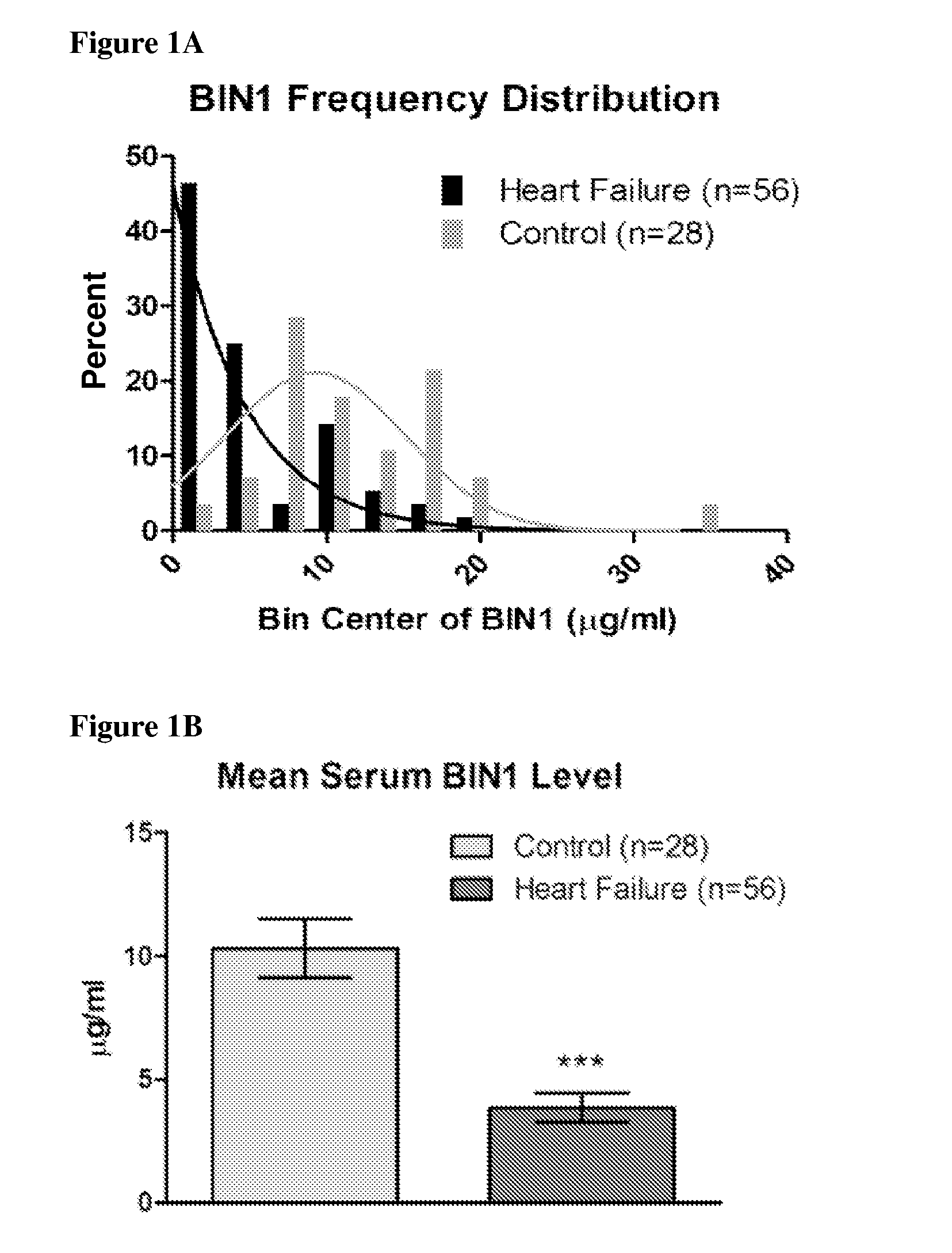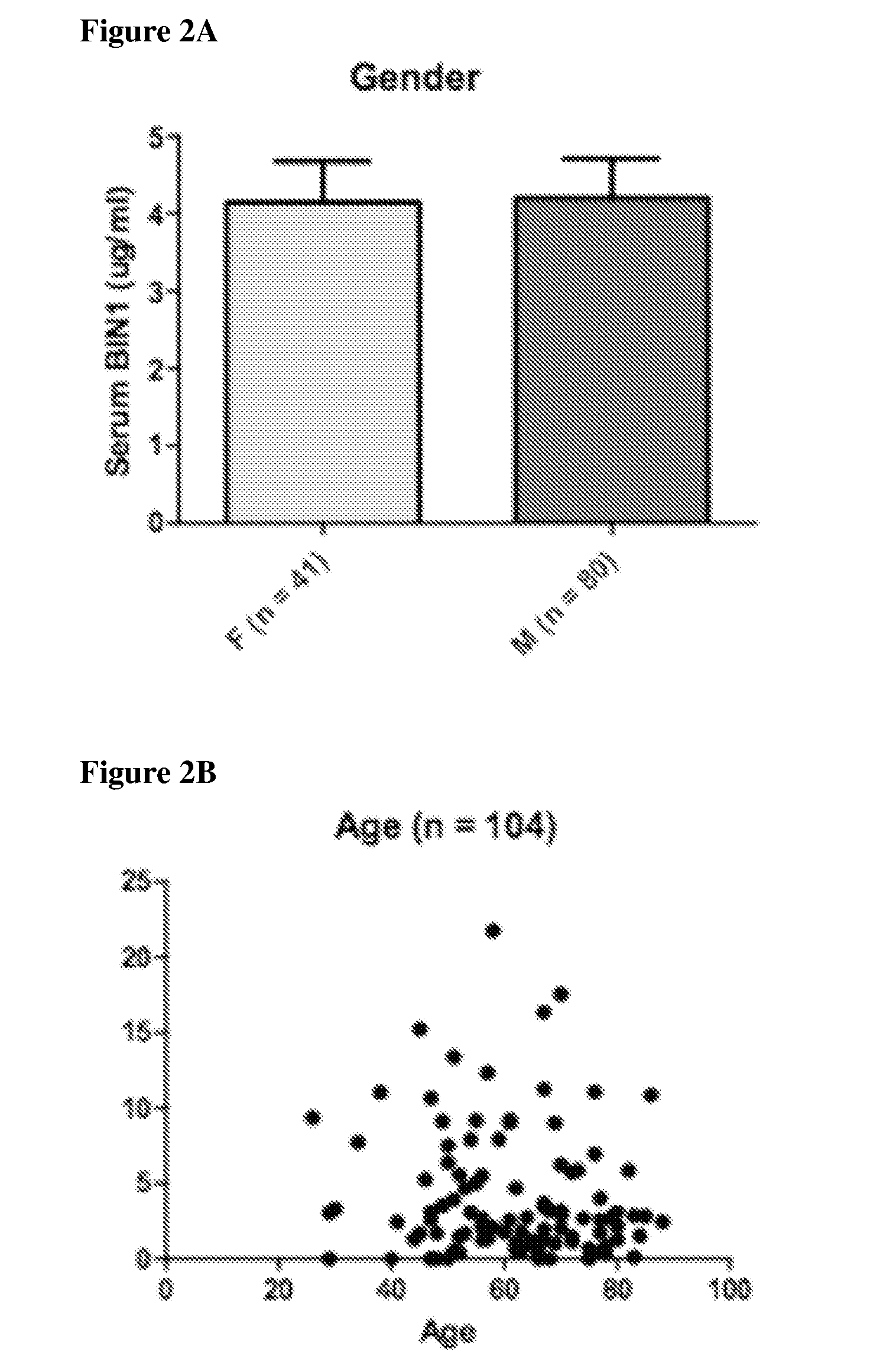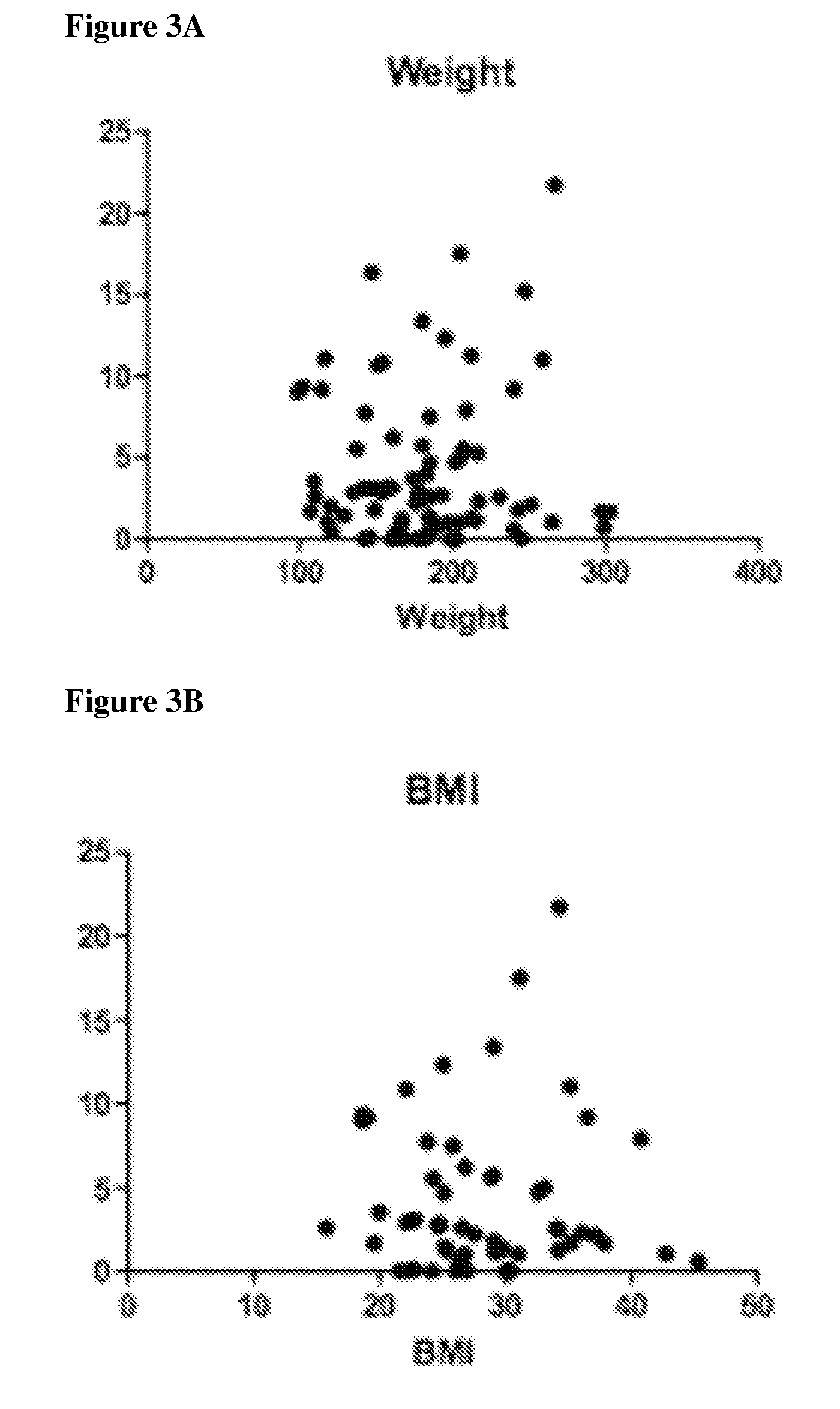Body Fluid BIN1 as a Marker of Cardiac Health
- Summary
- Abstract
- Description
- Claims
- Application Information
AI Technical Summary
Benefits of technology
Problems solved by technology
Method used
Image
Examples
example 1
Serum BIN1 Protein Levels in Healthy Subjects and Subjects with Heart Failure
[0174]Serum BIN1 protein levels in 56 patients diagnosed with heart failure and 28 age matched healthy individuals measured (Control group). Serum samples were obtained from heart failure patients at UCSF Advanced Heart Failure and Transplant clinic. BIN1 protein levels were measured by an ELISA assay and are shown in FIGS. 1A and 1B. FIG. 1A depicts BIN1 Frequency Distribution as measured as BIN1 protein level and the percent of heart failure patients and controls showing a particular BIN protein level. As is seen in FIG. 1A, a greater percent of the heart failure patients had a lower level of serum BIN1 as compared to the control individuals whose serum BIN1 protein level centered around about 9 μg / ml. FIG. 1B provides the mean serum BIN 1 level of the control individuals and the heart failure patients.
[0175]FIGS. 1A and 1B. Serum Bin1 in Heart Failure Clinic is Different from Control. FIG. 1A. Histogram ...
example 2
BIN1 Protein Level does not Correlate with Gender, Age, Weight, or Body Mass Index (BMI)
[0177]Serum BIN1 protein measured in heart failure patients were plotted relative to age, gender, weight, and BMI of the patients. No correlation of the serum BIN1 protein levels to age, gender, weight, or BMI was apparent.
[0178]FIGS. 2A and 2B. Serum BIN1 does not correlate with sex and age. Within the patients studied, there is no significant difference in BIN1 protein levels in male versus female patients (FIG. 2A) and with age (FIG. 2B).
[0179]FIGS. 3A and 3B. Serum BIN1 does not correlate with weight and BMI. Within the patients studied, there is no significant difference in BIN1 protein levels when evaluated against weight (in pounds) or Body Mass Index (weight in kilograms divided by the square of height in meters).
example 3
BIN1 Protein Level does not Correlate with Pulmonary Capillary Wedge Pressure
[0180]Within the heart failure patients studied, left ventricular ejection fraction (LVEF) were obtained by echocardiogram, and invasive right heart catheterization hemodynamics were performed to measure pulmonary capillary wedge pressure (PCWP). There is no significant difference in BIN1 protein levels and these two parameters (FIGS. 4A and 4B). Note that PCWP is a measure of intracardiac filling pressure which is reflected by the serum marker BNP.
PUM
 Login to View More
Login to View More Abstract
Description
Claims
Application Information
 Login to View More
Login to View More - R&D
- Intellectual Property
- Life Sciences
- Materials
- Tech Scout
- Unparalleled Data Quality
- Higher Quality Content
- 60% Fewer Hallucinations
Browse by: Latest US Patents, China's latest patents, Technical Efficacy Thesaurus, Application Domain, Technology Topic, Popular Technical Reports.
© 2025 PatSnap. All rights reserved.Legal|Privacy policy|Modern Slavery Act Transparency Statement|Sitemap|About US| Contact US: help@patsnap.com



